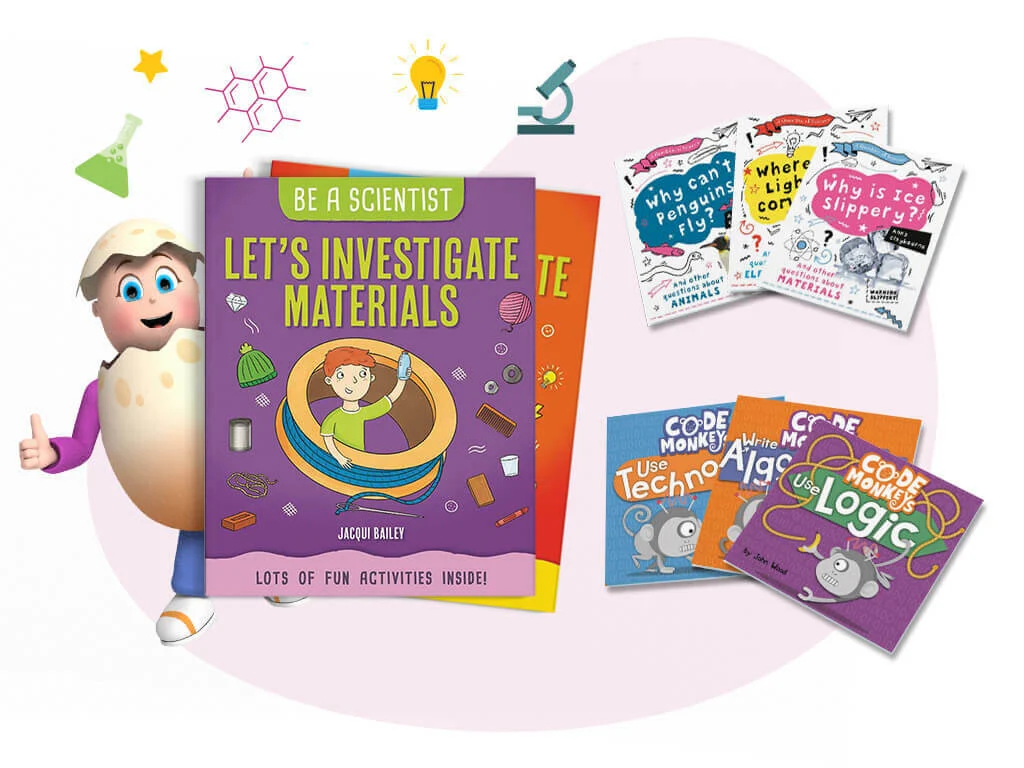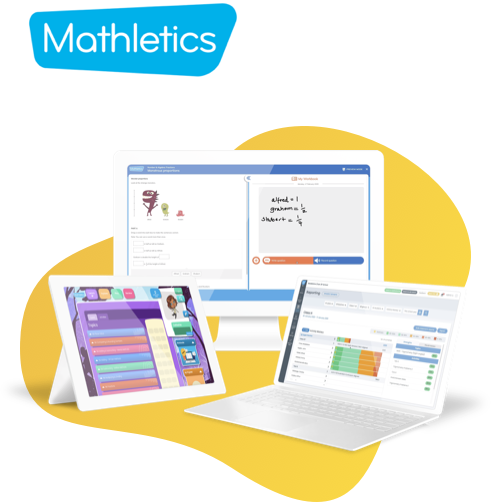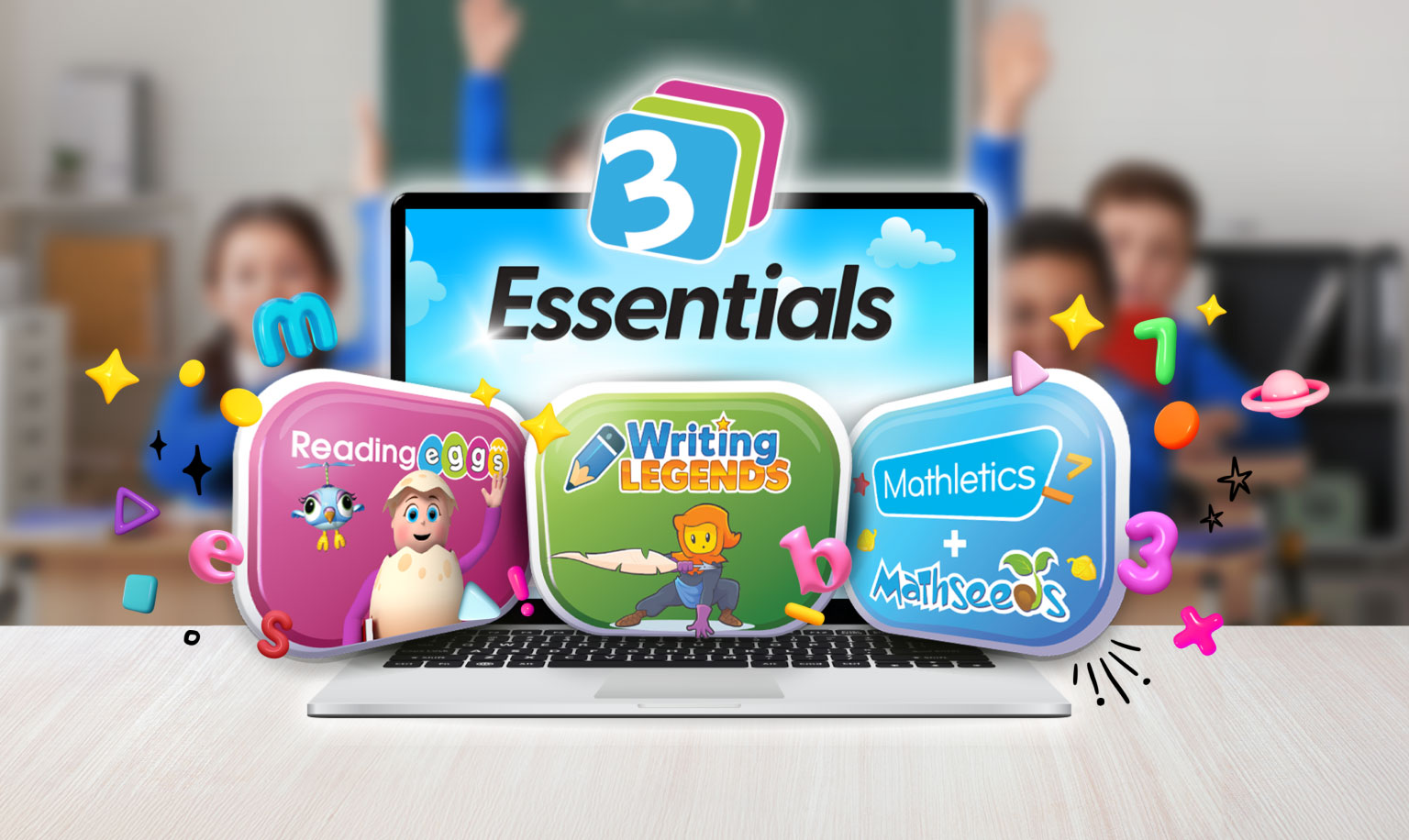
It’s bright, it’s shiny, it’s new. It’s all sleek devices and fun and games.
Surely technology will be the thing that finally gets our students engaged. All we need to know is how to use it and we’ll have them hooked. Right?
Not so fast.
There’s plenty of advice out there about engaging students with technology, but most of it fails to mention one vital point: We need to engage our students with meaningful learning. Not technology.
But that’s not to say technology can’t help. When used well, technology can help you craft learning experiences that get students so immersed they forget to leave when the bell goes.
Here are eight ways to make it happen.
1. Use technology to get students working together
Technology can bring a whole new level of engagement to group work. Instead of huddling around an A3 sheet all trying to write at once, your students will be able to:
- contribute equally, without the ‘strong-minded’ members of the class hogging the paper
- walk away with a copy of the activity on their device (without you having to photocopy it)
- stay accountable. Because every student has their own copy, it becomes their work as much as anyone else’s.
Here are some tech tools you can use to get students collaborating and loving it:
Online discussion boards
These make it easy for all students to get involved – even the ones who tremble at the thought of raising a hand during class discussion.
Pro tip: for more thoughtful discussions, kickstart things with an open-ended prompt and let students post as much as they like without the requirement for a specific type of response.
Cloud documents
Cloud documents (e.g. Google Docs or Microsoft OneDrive) allow students to work on the same item at once from their individual devices. It’s quicker and more organized than a shared piece of paper, and gives every student a voice.
Pro tip: have no more than 3–5 students working on the same document, and have them seated next to each other. This keeps students accountable and stops that student (you know the one) from anonymously typing in those comments.
Use breakout rooms
Some LMSs and live communication tools (e.g. Zoom) allow you to split students into virtual groups where they work together via video. It’s a distraction-free alternative to having multiple groups chatting away in the same room, and it lets home learners stay connected.
Pro tip: breakout rooms are great for jigsaw activities. Give each group a different task or question, and then have them return to the rest of the class to share their findings (perhaps as a document in the chat).

Related read: 3 Ways To Deepen Students’ Learning With Technology
2. Have students teach peers (and you) how to use new tech tools
Get your students to share tech tools and tips they already know with the rest of the class. Are they constantly trialing new apps? Building a social media following? Coding in their spare time?
Whatever they’re into, let your students become the teachers with weekly tech talks or mini-tutorials. Challenge them to link it back to learning or the things you’re currently studying in class.
This initiative uses technology that already engages your students to create an opportunity for independent learning (and teaching). Also, you’ll probably learn a thing or two from them yourself!
3. Use technology to connect students with the world outside the classroom
When will we ever use this? What’s the point? Why does it matter?
If you can answer these questions by connecting learning with the mythical ‘real world’, you’ll get engagement and your students will get purpose.
Connect your students with real people, places, and problems beyond the four walls of the classroom. For example, students could get online to:
- do webquests where they are tasked with finding solutions to a real problem (e.g. develop a plan to save an endangered animal)
- correspond with students from another school (even one on the other side of the world)
- connect with native speakers of a studied language
- publish completed assignments on a website or blog for a genuine audience.

Did you know? There over 3,500 digital books in Reading Eggs to help connect your students’ learning to the outside world.
4. Freshen up old resources with digital designs
Now’s the time to spruce up Jurassic resources that came to life before your students did. You can use free design templates from a tool like Canva to give your paper some pizazz, or swap a bland PowerPoint for a visually appealing Prezi. All you need to do is plug the text in for sleek and engaging resources that catch your students’ eyes.
Learning content is more likely to resonate when presented in clear, visually appealing ways, too. For example, an effective infographic will make complex concepts visible when even your best explanations don’t do the trick. Have a look at the free templates on Venngage.
Remember: you’re not a graphic designer and you’re not expected to be. Any effort is going to draw more engagement than none at all (even if the class gets to have a laugh at your illustration skills).
5. Use gamified learning programs
Besides being just plain fun, gamification engages students through visible progress tracking, measured challenges, and friendly competition. And while we might get some of these benefits through rewards charts and physical activities, technology can take gamification to a whole new level of engagement by:
- using points and scoring systems that track student progress in real time
- offering customisable avatars and characters to make the game personal for students
- setting learning challenges in immersive virtual worlds.
Just make sure you choose a game that has the right balance of engagement and educational value.
In our Mathletics and Reading Eggs games, for example, the educators behind it made sure every fun activity and challenge is explicitly tied to curriculum outcomes.
The other big plus of gamified technology is that students can use it to learn anytime, anywhere there’s internet. In fact, they’ll probably find themselves trying to set a high score or pass a tough level outside of class – even if you haven’t set homework.
For teachers, it’s a way of promoting independent learning. But to our students, it feels like fun more than anything else.

Mathletics makes mathematics fun and rewarding, catering to the different types of engagement styles through gamified activities.
6. Start a class blog
Seeing their work pinned up on the wall gives students a sense of ownership and pride.
But what happens when they create something that isn’t on paper? And wouldn’t it be great if parents could see it, too?
A class blog can showcase everything your students create, whether that be a link to an online resource, a photo, or a text-based post. Friends and family can have a look at any time, and students could also post reflective or explanatory statements to go alongside their work.
Fortunately, you don’t need to be tech savvy to get a blog up and running these days. Use a blogging platform designed specifically for teachers like Weebly, or a free service such as Blogger. You could even use your LMS. All you need is a single space where everyone can upload work for others to see.
7. Give your students tech options for their next project
If we give students the opportunity to think beyond paper projects, we give them the freedom to innovate and lose themselves in something immersive.
Think about how technology can take an ordinary task to the next level. For example:
- Speeches and oral presentations could become podcasts.
- Narratives could become short films.
- A research project could become a mini documentary.
- An art piece could be animated.
- Posters could be created using online graphic design tools.
- Essays or extended written pieces could be published as online articles with photos.
Tip: leave the options open so students have choice. They can produce something more traditional if they want to, or think outside the box and come up with something entirely new. Just talk through the criteria first so they all know to evidence the same learning.
8. Use social media
Our students are captivated by the real relationships, communities, connections, and identities they can form on social media.
And as teachers, we should be, too. Because they’re rich in learning opportunities.
Here are some ways you might use social media for learning.
- Have students crowdsource opinions on social media via a survey or public post.
- Have students share work to receive feedback from people outside class.
- Students could create a post, ad, or group as the final product in a project.
- Students could organise an event (e.g. a fundraiser).
- Students could create groups or communities to raise awareness of issues or ideas.
- (For upper school) students could experiment with what it takes to ‘go viral’ and find out something about their peers and the public in the process.
Tip: if you’re using social media, it’s a good time to talk about online safety. Have students design a fake profile and use this to spark a discussion about how easy it is for people to misrepresent themselves online.













